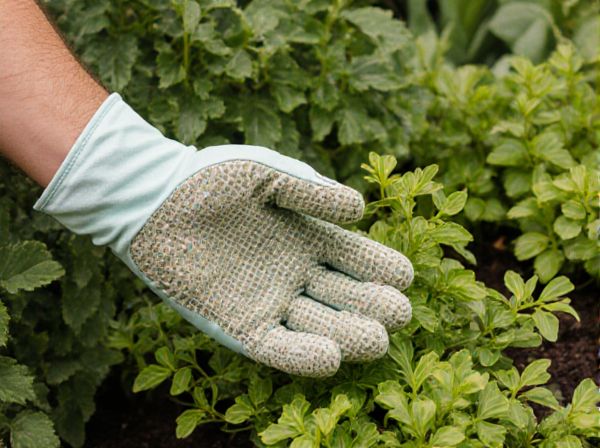
Dwarf Varieties vs Standard Varieties Illustration
Dwarf varieties of edible plants offer compact growth and are ideal for small spaces or container gardening, producing quicker harvests compared to standard varieties. Standard varieties generally yield larger plants with higher overall production but require more space and longer growing periods. Choosing between dwarf and standard varieties depends on available space, desired harvest size, and growth time preferences.
Table of Comparison
| Feature | Dwarf Varieties | Standard Varieties |
|---|---|---|
| Size | Compact, 1-3 feet tall | Large, 6-12 feet tall |
| Yield | Moderate, suitable for small spaces | High, ideal for commercial production |
| Growth Rate | Fast maturation | Slower maturation |
| Maintenance | Low, easier pruning and harvesting | High, requires more care |
| Space Requirement | Minimal, fits balconies and small gardens | Extensive, needs large outdoor areas |
| Fruit Size | Smaller to medium | Medium to large |
| Root System | Shallow, less invasive | Deep, strong anchorage |
Introduction to Dwarf vs Standard Edible Plants
Dwarf edible plant varieties offer compact growth suitable for limited spaces, often maturing faster than standard varieties. Standard edible plants typically produce higher yields and larger fruit or vegetable sizes, making them ideal for extensive gardens or commercial farming. Choosing between dwarf and standard edibles depends on space availability, yield goals, and cultivation conditions.
Key Differences: Size, Yield, and Space Requirements
Dwarf edible plant varieties exhibit significantly smaller size compared to standard varieties, making them ideal for limited space gardening such as balconies or small patios. Despite their compact size, dwarf varieties often provide comparable yield rates by producing fruit or vegetables more efficiently per plant. Standard varieties require more space due to their larger growth habit but can yield greater total harvest per plant if ample garden area is available.
Ideal Growing Conditions for Dwarf Varieties
Dwarf edible plant varieties thrive best in well-drained soil with consistent moisture and full sun exposure of at least 6-8 hours daily, promoting compact growth and early fruiting. Optimal temperatures range from 60 to 75degF (15-24degC), which support healthy development without excessive stretching or bolting. These varieties benefit from balanced fertilization, particularly with moderate nitrogen levels to prevent lush foliage at the expense of fruit production.
Advantages of Standard Varieties in the Garden
Standard varieties in the garden offer higher yields and larger fruit sizes, making them ideal for maximizing harvest. These varieties typically have stronger root systems, promoting better nutrient uptake and overall plant resilience. Their robust growth habits often enhance pest resistance and adaptability to diverse growing conditions.
Best Edible Plants Available in Dwarf Forms
Dwarf varieties of edible plants offer compact growth habits while maintaining high yields and flavor quality, making them ideal for small gardens and container cultivation. Popular dwarf edible plants include cherry tomatoes, bush beans, and miniature peppers, which deliver full-sized taste and nutritional value in a reduced footprint. These dwarf cultivars also enhance urban gardening by maximizing limited space without sacrificing plant productivity.
Maintenance and Care: Dwarf vs Standard Plants
Dwarf edible plant varieties require significantly less maintenance and care compared to standard varieties due to their compact size and reduced growth habit, resulting in easier pruning, pest management, and harvesting. Standard varieties often demand more frequent watering, fertilization, and support structures to accommodate their larger growth and higher yield potential. Selecting dwarf varieties can optimize garden management by minimizing space usage and resource input while maintaining productive growth.
Harvest Times: Comparing Dwarf and Standard
Dwarf varieties typically offer faster harvest times, often maturing 10-20% earlier than standard varieties due to their compact growth and concentrated fruit production. Standard varieties tend to have longer growth periods but yield larger overall harvests, benefiting from extended time for fruit development. Choosing between dwarf and standard varieties depends on balancing early access to produce against total yield volume for specific edible gardening or farming goals.
Suitability for Small Spaces and Urban Gardening
Dwarf varieties excel in small spaces and urban gardening due to their compact size, requiring less soil depth and minimal pruning, which makes them ideal for containers and balcony gardens. Standard varieties demand more space, larger containers, and extensive sunlight, often making them impractical for limited urban environments. Selecting dwarf edible plants enhances yield efficiency while maximizing space utilization in urban settings.
Taste and Nutritional Differences
Dwarf varieties of edible plants often exhibit more concentrated flavors due to their compact growth and higher nutrient density, offering a richer taste compared to standard varieties. Nutritionally, dwarf plants can contain elevated levels of vitamins and antioxidants, making them a potent source of essential nutrients in smaller portions. Standard varieties typically yield larger harvests but may have milder taste profiles and slightly lower concentrations of certain micronutrients.
Which to Choose: Factors for Gardeners to Consider
Dwarf edible varieties offer compact growth, making them ideal for limited spaces or container gardening, while standard varieties typically provide higher yields suitable for larger gardens. Gardeners should consider space availability, desired harvest volume, and maintenance requirements when selecting between dwarf and standard edible plants. Climate adaptability and disease resistance are also critical factors influencing the choice of variety for optimal garden performance.
Dwarf Varieties vs Standard Varieties Infographic

 gardendif.com
gardendif.com